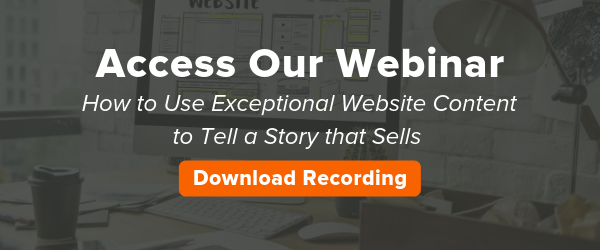Aligning Inbound Lifecycle Stages with the Buyer’s Journey

Assigning lifecycle stages to your contact database will help you effectively nurture leads down the funnel, allowing you to convert, close and continue to delight them with relevant offers. Aligning a contact’s lifecycle stage with their position in buyer’s journey allows you to curate content specific to their needs and challenges at specific stages of the decision process — in effect, streamlining the lead nurturing process and driving conversion.
The stages of the B2B buyer's journey can be broken into three parts: the awareness, consideration and decision stage. Each section of the buyer's journey corresponds with two sections of the marketing and sales funnel. Within the marketing and sales funnel, lifecycle stages are as follows: subscriber, lead, marketing qualified lead (MQL), sales qualified lead (SQL), opportunity and customer. Together, the buyer’s journey and the lifecycle stages of the marketing and sales funnel work together to drive conversion.
Awareness Stage
Awareness is the first stage of the buyer’s journey. Buyers in the awareness stage are in the top of funnel and are defined as subscribers or leads. In this stage, the buyer is recognizing their problem and starting to research potential solutions. This stage of the buyer's journey is primarily educational and research-based.
Subscriber
A subscriber is a contact that has opted-in to receiving information from your company. This information can take the form of a newsletter or blog subscription.
As a contact in the awareness stage of the buyer’s journey, this individual is at the very first stage of the sales process and should be nurtured as such. To urge this contact down the funnel and into the next lifecycle stage, continue to provide them with relevant, educational, top-of-funnel content by way of their blog or newsletter subscription.
Lead
A lead is a contact that has shown a bit more interest in your company than a subscriber, but not enough interest to initiate a sales conversation. Usually, a lead exhibits this interest by downloading a top-of-funnel premium content offer on your website.
In order to drive conversion and provide the most value for your leads and subscribers, ensure that your content and form strategies align with the associated awareness stage of the buyer’s journey.
Nurture your awareness stage contacts with offers like:
- Whitepapers
- E-books
- Guides
- Checklists
- How-To Videos
- Educational Webinars
Because the prospect is only in the first stage of the buyer's journey, you don't want to overwhelm or alarm them with a lengthy, overly-personal request form. Nobody wants to share a ton of personal information right off the bat.
Top-of-funnel forms should be thorough enough to give your sales and marketing teams adequate information to pursue the lead, but broad enough to make the lead feel comfortable sharing those details. Requesting information like name, company, company size, email and industry are usually safe bets for ToFu form fields. These elements provide enough information for your marketing and sales teams to follow up with leads, without being too personal and dissuading engagement.
Consideration Stage
Buyers in the consideration stage are considered to be in the middle of the funnel. In this stage, the contact is classified as a Marketing Qualified Lead (MQL) or Sales Qualified Lead (SQL). At this point, the buyer has begun to evaluate potential solutions to the problem they recognized and researched in the awareness stage.
Marketing Qualified Lead (MQL)
As a lead’s interest in your product or service evolves, their behavior will change in a predictable and obvious manner. MQLs are leads that have shown a substantial deal of interest in your product or service.
This increased interest can be identified through several middle-of-funnel content downloads or a single bottom-of-funnel content download. Leads that exhibit these actions are signaling that they are seriously interested in what your brand has to offer and are therefore qualifying themselves as an MQL.
Sales Qualified Lead (SQL)
Essentially, a SQL is an MQL that sales has deemed qualified for direct outreach. It’s easy to forget that this evaluation should go both ways — that a lead needs to be a good fit for your company in order to provide high ROI to your business. It's important to use your designated buyer persona template to ensure that this lead is likely to close before qualifying them as an SQL.
Nurture your consideration stage contacts with offers like:
- Case Studies
- Samples
- Demo Video
- Data Sheet
- Product/Service Webinars
Because the buyer is showing a more active level of involvement and interest, your form can ask for more personal details without being considered too invasive. Phone number, for instance, is a MoFu form detail that will allow your team to follow up with the lead in a more personal way. Gathering details like a lead's "biggest challenge" can help your team better understand their specific problems and how to frame your business as a potential solution. By capturing this type of information in your form strategy, your team can better tailor their sales conversions conversation and build a rapport.
Decision Stage
Last is the decision stage, where buyers are classified as opportunities or customers. This stage of the buyer's journey signifies that the user has decided on a solution for their problem. They are ready to purchase and are actively considering a specific brand or solution provider.
Opportunity
An opportunity is a contact that is actively engaged in a sales conversation and represents potential revenue. At this point in the sales cycle, the opportunity has been deemed a good fit for your company and vice versa. From here, it’s just a matter of engaging with your opportunity to hash out details and hopefully close the deal.
Customer
Just because a contact has become a customer doesn't mean you shouldn't nurture them anymore. Afterall, the easiest deals to close are with your existing customers. Nurture your customers into becoming evangelists of your brand by providing them with relevant, timely content that fosters the opportunity for an upsell.
Nurture your decision stage contacts with offers like:
- Free Trials
- Consultation or Assessment
- Estimate or Coupon
- Live Demos
Considering that this is the highest-involvement stage of the buyer's journey, it makes sense that the form associated with this stage would be the most detailed. Make sure you are asking questions specific attached with bottom-of-funnel content offers. The answers to these questions should help your team better deliver on a trial, demo, consultation, etc. For example, at New Breed, we ask the lead what type of marketing automation they use. This information helps us better understand their problem and ensure that the lead is getting the most out of their consultation, assessment, etc.
By understanding how contact lifecycle stages align with the inbound buyer’s journey, you can optimize your lead nurturing strategy to drive conversion and ultimately boost revenue.
Interested in learning how to tailor your content marketing strategy to drive conversion at each stage of the buyer's journey? Register for our upcoming webinar to find out all you need to know to drive more sales.




